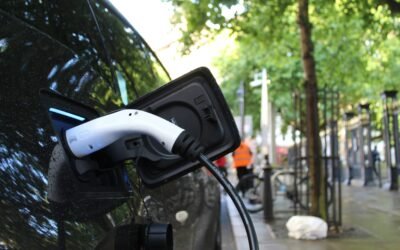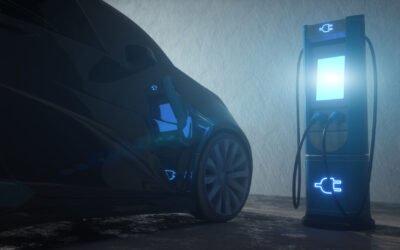- In advanced economies EV charging infrastructure is being built at a remarkable pace.
- The biggest market for DC chargers globally in terms of units will be workplace charging followed by destination and En-route charging.
- In 2020 only, around 1 million DC fast chargers were installed globally.
In advanced economies, especially the EU member states and the US, EV charging infrastructure is being built at a remarkable pace aimed at keeping momentum with the needs of the electric vehicle industry. Businesses, from small scale manufacturers to multi-national corporations, as well as governments are coming together to support the electrification of the transport sector, which is responsible for of the global greenhouse gas emissions.
There are currently two types of chargers, including the slower AC chargers and faster DC chargers. The market is presently dominated by AC chargers, and this is expected to stay the same in coming years; however, there is a burgeoning market for DC chargers. The biggest market for DC chargers globally in terms of units will be workplace charging followed by destination and En-route charging.
Destination chargers are ones that are installed at restaurants, supermarkets, public parking garages, shopping malls and cinemas. Enroute chargers are installed at gas stations, highways, and also include bus/trucks/special charging. On the other hand, workplace chargers are installed in private parking lots of offices, commercial buildings, as well as in depots and e-bus/e-Trucks depots.
In 2030, according to Power Technology Research, global workplace DC charge points are expected to increase more than 12 times, destination DC charge points are expected to increase more than 4 times, while enroute DC charge points are also expected to increase more than 5 times from base units in 2020.
In 2020, less than 5% of the chargers installed globally were DC chargers. However, the penetration of DC chargers is , with the highest penetration to be expected in Germany, followed by the Netherlands and Norway.
Furthermore, it is expected that with the electrification of heavy-duty vehicles, demands for installation of ultra-fast chargers on urban corridors and highways will surge.

Figure 1: Number of charge points installed (Enroute, Destination and Workplace)
Source: Power Technology Research
Despite the tilt of advanced economies and the private investment pouring in for the development of fast charging infrastructure there are still impediments in the way of widespread deployment of fast charging infrastructure which needs to be addressed. These impediments include the absence of standardization, upgradation of grid infrastructure and coverage of charging infrastructure etc.
Requirements for Uptake of Fast Charging Infrastructure
It is of utmost importance that both head for standardization of electric vehicle charger plug types. For instance, the U.S. has CCS, CHAdeMO and Tesla’s EV charger plug types in the market; Europe, on the other hand, has CHAdeMO. Standardization will not only help in driving down the price of charging infrastructure but will also be effective in providing coverage to customers of all types.
Grid infrastructure will also require upgrades, especially regarding the installation of high-powered DC fast chargers. If installed on a weak bus, such chargers may lead to severe voltage and stability issues, followed by losses as high as 80%, rendering the whole exercise of electrification futile. Battery storage systems should also be required to assist in regions with grid constraints.
Furthermore, the coverage of charging infrastructure needs to be optimized as the mere deployment of chargers is not going to help the cause. What is required is a network of ultra-fast charging sites that fall within the reach of electric vehicle owners in all communities, from urban areas to rural villages, so that the installed chargers have an appropriate utilization rate. Utilization rates of enroute DC chargers are currently at 5-10%; these rates need to increase to 20-25% for them to become financially viable and attractive (as per PTR estimates).
There exists a problem with the fast chargers that are currently installed globally, that they usually charge at rates much lower than what is stated. This is of immense concern to the operations and maintenance side of the electric vehicle charging infrastructure and is an issue which needs to be addressed.
Recent deployment of EV charging infrastructure
Ultra-rapid charging hubs are being constructed by Gridserve, which locates these Electric Hubs along major trunk roads in the UK. At these hubs, 6-12 HPC columns will be established, which will deliver up to 350 kW. An investment worth USD 5.97 Million has been announced by the government of the Belgian region of Flanders. By mid-2024, around 49 High Power Charging (HC) points are planned to be installed, with a minimum capacity of 150 kW on expressways and rural roads.
Similarly, Allego (leading European public charging network) is expected to install 2000 fast-charging points with outputs in the range of 75-300, at locations in excess of 200 in France till 2023.
Looking Ahead
Power Technology Research is observing considerable growth in the installation of fast charging networks, especially in Germany, UK, and China. This is because of the heightened emphasis on increased battery capacity, which, in turn, requires a high-powered charging network. Significant investments by Charge Point Operators (CPOs) and car manufacturers will, ergo, be expected. In 2020 only, around 1 million DC fast chargers were installed globally.
EV Charging Infrastructure Service Overview
The research presented in this article is from PTR's EV Charging Infrastructure market research. For information about this service please submit a request shown below.
Contact Sales:
More about our:
EV Charging Infrastructure Market Research
Recent Insights
Exploring the European EVCI Services Market Key Players and Emerging Trends
There has been a significant surge in the development of EVCI due to the widespread adoption of EVs in Europe. By 2030, it is expected that Europe...
Nordics EVCI Market Comparison: Quarterly Growth and Market Dynamics – 2024
This infographic examines the ambitious policies and regional targets that are propelling the growth of Electric Vehicle Charging Infrastructure...
Electrifying Future: Emerging Trends and Strategic Targets in the Middle East
This infographic presents an overview of the burgeoning electric vehicle (EV) market in the Middle East. It highlights the region's ambitious...


